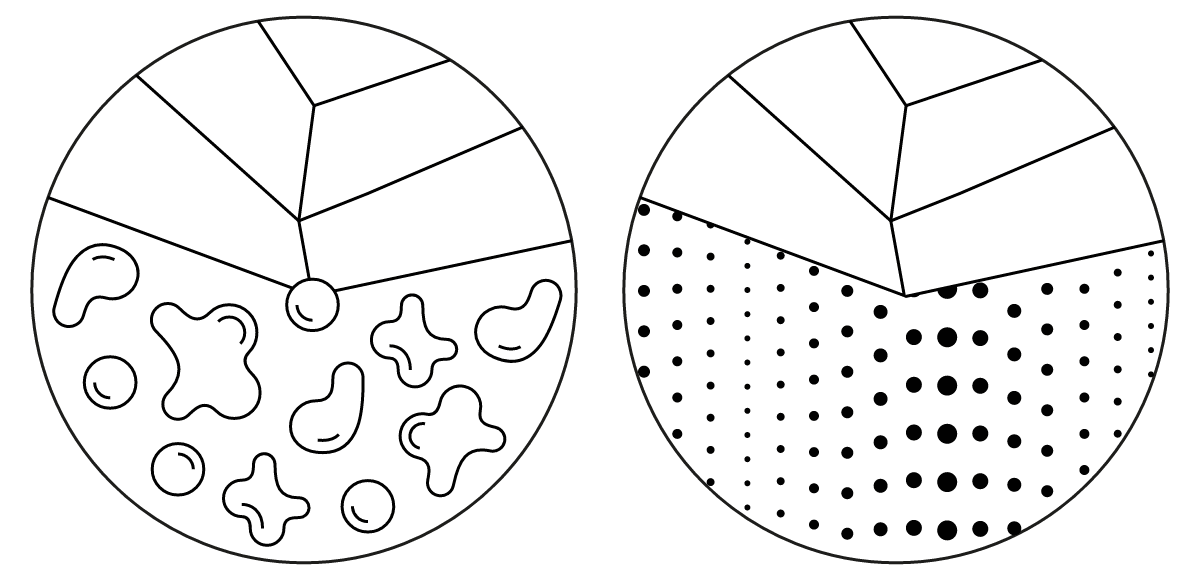Your guide to combination skin
Does having a combination of more than one skin type sound overwhelming? We get you. And we’re here to help!

What is a combination skin type?
Having combination skin, you’re blessed (or not) with more than one skin type. And not in the sense that some days you have oily skin and some days it’s normal and other days it dry. No no. More in the sense that some areas of your face are oily while others can be dry or normal.
And this may not sound like a huge problem (and it isn’t necessarily), but people with combination skin will often find it difficult to find the right skincare products because different areas of the face have different needs.
Sounds fun, right?
No? Okay. So let’s get to know combination skin a little better. That way it gets easier caring for it.
We’ll start from the beginning:
How to determine if you have combination skin
You may already know what skin type you have. But it isn’t always easy to determine. Especially if you have combination skin, since the oiliness of this skin type can trick you into thinking that you have an overall oily skin type.
Nevertheless, a way to figure it out is to put on your investigating glasses and investigate how your skin acts throughout the day 🧐
If you’re getting oily in the T-zone (the nose-brows-forehead part of your face) while your cheeks are perfectly fine, or if your skin has dry patches, but you’re still struggling with excessive oil production and breakouts in other areas, well, you know. It’s most likely a combination skin type you’re dealing with.
You’ll probably also find that products developed to “normal skin” works great on some parts of your face, but not really doing the trick for other parts. Again, combination skin is great like that. But don’t worry, we’ll get to the “how to deal with combination skin”-part in just a second.
How to care for combination skin
As you’ve probably figured by now, dealing with combination skin can be quite the challenge. Also when it comes to finding the right skincare for it.
A product that works for your T-zone might cause problems in other areas of your face. If you really wanna go the extra mile for your combination skin, an approach would be to treat the different skin types of your face in different ways.
That’s a lot. We know. And you’ll get a long way by just being mindful of what you actually put on your face. Usually, we recommend a simple and gentle 3-step routine (cleanser, moisturiser, sunscreen), but with combination skin you may wanna add an extra step here and there a few times a week.
Let’s break down it down and take a look at what a skincare routine for combination skin could look like:
Cleanser
As for the cleansing part of your routine, double cleansing has become quite the popular kid in school for people dealing with oiliness. Double cleansing is exactly what it sounds like: You cleanse your face twice. First with an oil-based cleanser to remove sunscreen, makeup and build-up dirt and oil, and then a water-based cleanser to finish the job.
Moisturiser
When it comes to choosing the right kind of moisturiser (and this is where essentially having two sets of routines would make sense), you just have to find what works for you. The oily parts of your face may want a lightweight cream, while the dry parts want to soak up as much moisture as possible. This approach tends to over-complicate skincare which is why we make formulations that meets both needs at NØIE (in case you were wondering 😉)
Sunscreen
Noone (maaaaybe someone, but we’ll take our chances here) with oily skin likes to put on sunscreen. They’re often thick and greasy and feel super heavy on the face - and oftentimes they break you out. Nevertheless, we need to wear them. A good tip is to look for a sunscreen that’s non-comedogenic (meaning that it’s less likely to clog your pores and make you break out).
A little extra somethin’ somethin’
As teased for in the beginning of this chapter, you may need a little extra oomph to really get where you wanna be with your skin. Exfoliants are great for removing dead skin cells, which keeps pores clear and releves dry areas.
By implementing a BHA (a beta-hydroxy-acid which is the fancy name of the popular ingredient salicylic acid) to your routine, you’ll be able to prevent (it’s always easier to prevent than fix) symptoms from oily skin such as clogged pores. BHA is genius because it has the capacity to cleanse the skin from within, reduce signs of inflammation and overall improve the texture of the skin. Just be careful not to overdo it with the exfoliator and you’ll be great.
And just remember: Having a combination skin type is super common (actually almost 40% of our users have combination skin).